In the enchanting world of gardening, few things bring as much joy as vibrant blooms that demand little of your time and effort. Whether you’re a seasoned gardener or just beginning to explore the wonders of plant care, the thought of cultivating stunning flowers without the burden of constant maintenance is undeniably appealing. Low maintenance flowering plants offer the perfect solution, allowing you to enjoy nature’s artistry while keeping your gardening routine blissfully simple.
Imagine strolling through your garden, admiring a tapestry of colors that require minimal fuss. This article will guide you through a selection of easy-care flowering plants that are perfect for creating a breathtaking garden with less work. You’ll discover resilient varieties that thrive in various conditions, ensuring success for gardeners of all skill levels. From sun-loving beauties to shade-tolerant wonders, we’ll introduce you to plants that practically care for themselves.
As we delve into this topic, prepare to unlock the secrets of choosing the right plants and maximizing their potential with smart, straightforward tips. You’ll learn how to select species that not only fit your climate but also enhance your garden’s aesthetic appeal. By the end, you’ll feel empowered to create a flourishing floral paradise that complements your lifestyle, with time left over to simply savor your blooming success. Let’s embark on this delightful journey to a garden that’s as rewarding as it is effortless.
Choosing Easy-Care Blooms
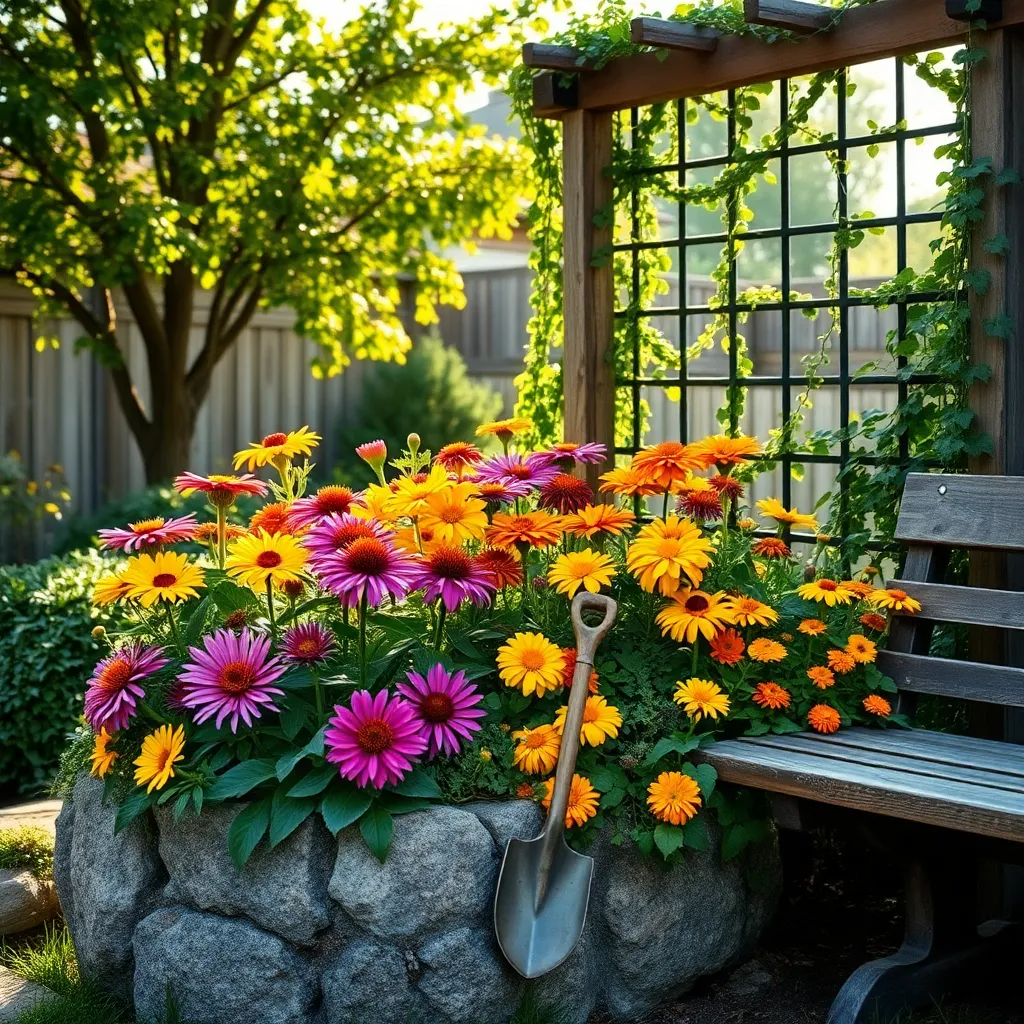
To start your journey into low-maintenance gardening, consider planting perennials like coneflowers and daylilies. These vibrant blooms are not only easy to care for but also return year after year, providing lasting beauty with minimal effort.
When selecting easy-care blooms, opt for native plants that are naturally adapted to your local climate. These varieties require less watering and fertilization, thriving with little intervention and offering robust resistance to local pests and diseases.
Aim for plants that are drought-tolerant if you’re in an area with hot, dry summers. Succulents like sedum, as well as ornamental grasses, can add texture and interest to your garden while surviving on minimal water.
For a burst of color with little fuss, try planting marigolds or zinnias. These annuals germinate quickly and bloom profusely with just basic care, such as regular deadheading to promote continuous flowering.
Ideal Soil for Effortless Growth
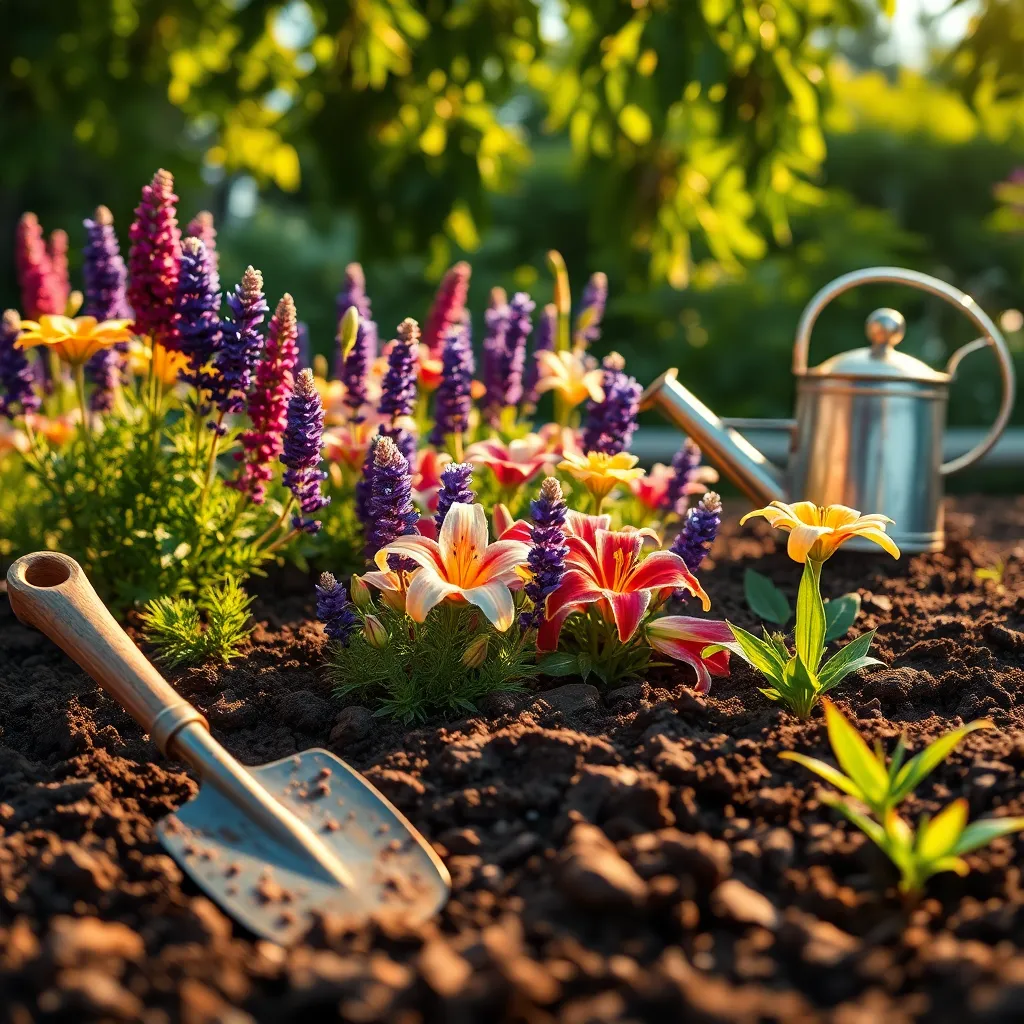
Achieving effortless growth in your garden starts with choosing the right soil. A well-balanced, nutrient-rich soil provides a solid foundation for your low-maintenance flowering plants, ensuring they thrive with minimal intervention.
For most flowering plants, a loamy soil is ideal due to its excellent drainage and nutrient-holding capacity. This type of soil combines sand, silt, and clay in roughly equal parts, creating the perfect environment for root growth.
To enhance your soil’s structure, consider incorporating organic matter such as compost or well-rotted manure. This not only boosts nutrient content but also improves the soil’s ability to retain moisture, reducing the need for frequent watering.
If you’re new to gardening, start by testing your soil’s pH level using an inexpensive kit from a garden center. Most flowering plants prefer a slightly acidic to neutral pH, around 6.0 to 7.0, which ensures optimal nutrient availability.
More experienced gardeners may want to create a custom soil mix tailored to specific plant needs. Mixing in materials like perlite or vermiculite can improve aeration and drainage, particularly useful for potted plants or those requiring drier conditions.
Simplified Watering Practices
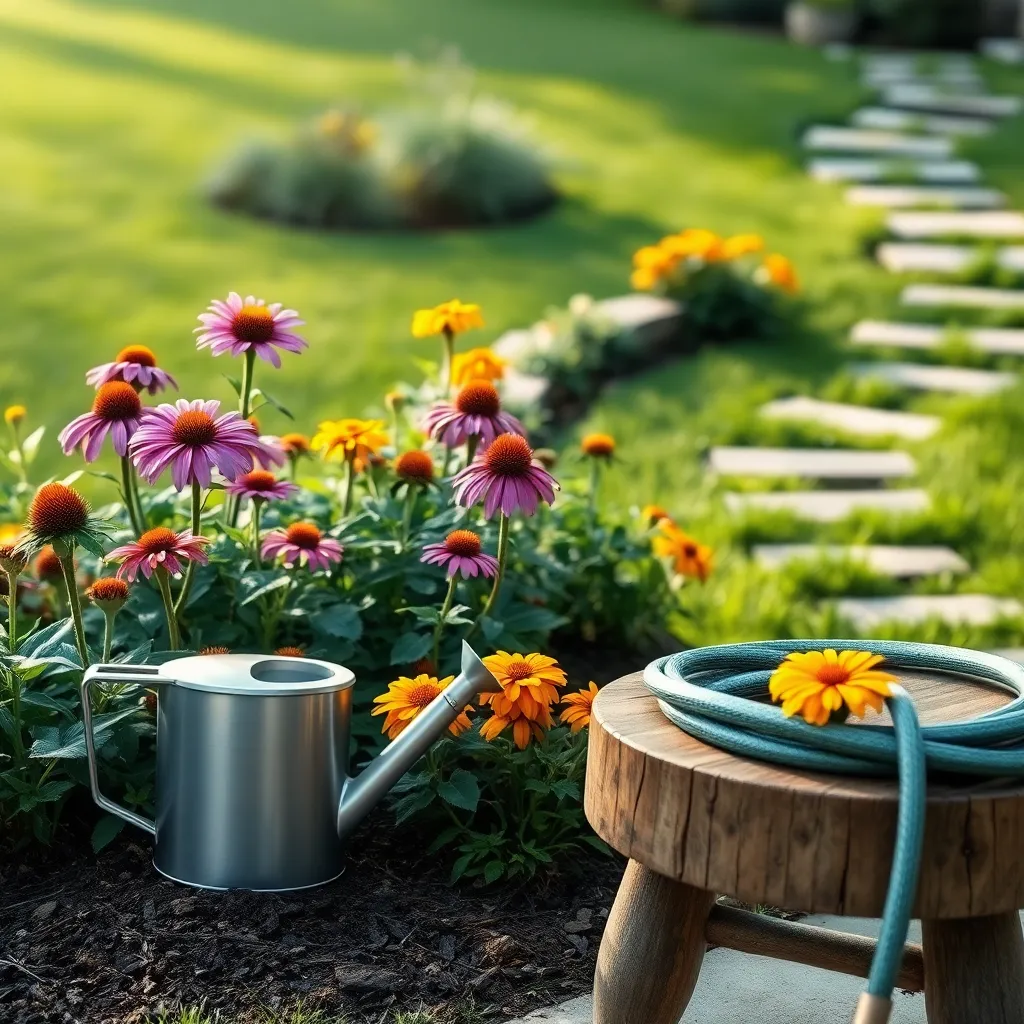
Watering your flowering plants correctly is crucial for their health and vibrancy. Begin by understanding that different plants have varying water needs; some prefer consistently moist soil, while others thrive in drier conditions.
For low maintenance flowering plants, focus on drought-tolerant varieties that require less frequent watering. Consider using a drip irrigation system to deliver water directly to the roots and reduce evaporation.
It’s essential to water deeply but infrequently to encourage deep root growth. Test the soil moisture by inserting your finger about an inch deep; if it’s dry, it’s time to water.
Utilize mulch around your plants to retain soil moisture, which can significantly reduce watering needs. Organic mulches like bark or straw also help suppress weeds that compete for water and nutrients.
Minimal Fertilizing Needs Explained
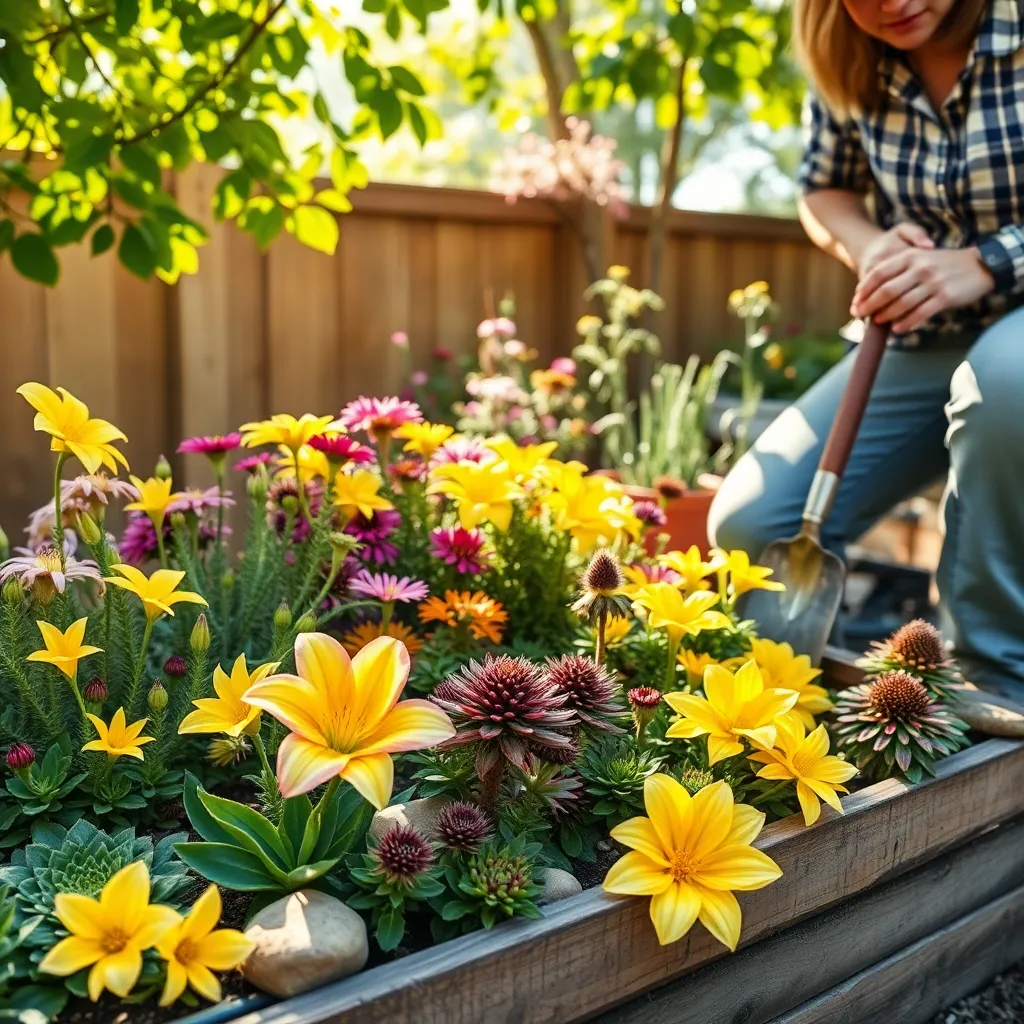
Many low maintenance flowering plants thrive with minimal fertilizing, making them perfect for busy gardeners. These plants often require fertilization only once or twice a year, significantly reducing the effort needed for their care.
To ensure healthy blooms, it’s crucial to use a balanced, slow-release fertilizer, which gradually supplies nutrients over time. This type of fertilizer is particularly beneficial for perennials like lavender and coneflowers, which are known for their hardiness.
Before fertilizing, always test the soil to determine its current nutrient levels. Soil testing kits are widely available and can help you avoid over-fertilizing, which can harm plant health and hinder flowering.
For an advanced tip, consider incorporating organic matter such as compost into the soil. This not only provides a natural source of nutrients but also improves soil structure and moisture retention, benefiting plants like daylilies and black-eyed Susans.
Pest Control with Little Effort
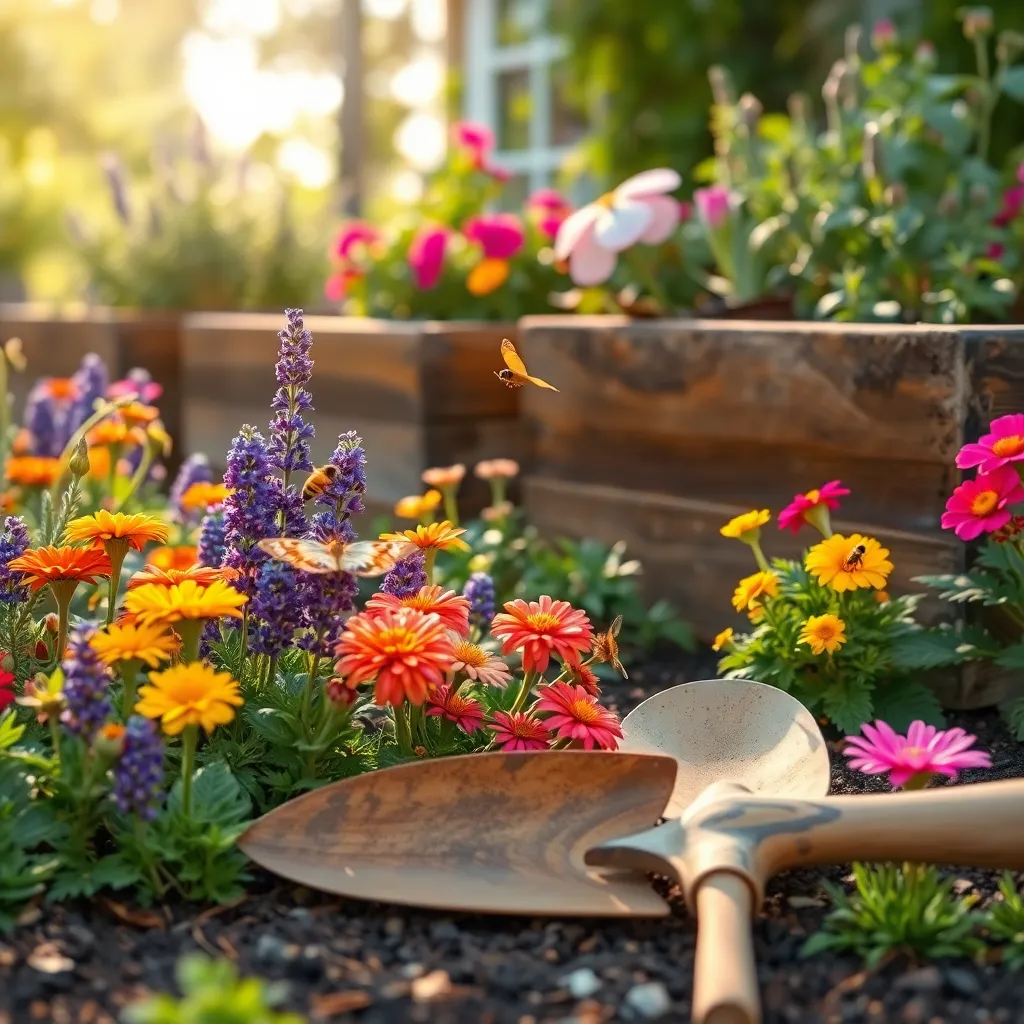
Managing pests in your garden doesn’t have to be a daunting task. You can achieve effective pest control with minimal effort by integrating natural methods into your routine.
First, it’s essential to choose plants that are naturally resistant to pests. Marigolds, lavender, and nasturtiums are excellent low-maintenance flowering options that repel common garden pests like aphids and beetles.
Incorporating companion planting is another simple strategy. Pairing certain plants together, such as tomatoes with basil or roses with garlic, can help deter pests and promote healthier growth.
Regular inspections can also make a significant difference in pest management. Take a few minutes each week to check your plants for signs of distress, such as chewed leaves or sticky residue, which can indicate pest presence.
For those seeking a more hands-off approach, consider introducing beneficial insects like ladybugs or lacewings. These natural predators can help keep pest populations in check without the need for chemical interventions.
Finally, maintaining a healthy garden environment is crucial. Ensure your plants are growing in well-drained soil and receiving the right amount of water—typically about 1 inch per week, either from rainfall or supplemental watering—to keep them resilient against pests.
Conclusion: Growing Success with These Plants
In exploring ‘Low Maintenance Flowering Plants,’ we’ve delved into five key relationship concepts: the importance of resilience, the value of simplicity, the beauty of patience, the power of consistent nurturing, and the joy of growth. Each of these principles mirrors the dynamics of healthy relationships, reminding us that thriving connections, like flourishing gardens, require thoughtful care without excessive demands.
Now, it’s time to take action. Choose one relationship in your life that could benefit from a touch of these principles. Whether it’s offering a kind word, planning a meaningful gesture, or simply being present, take a step today to nurture that bond.
Remember, relationships are living entities needing continuous care. Bookmark this article to revisit these insights whenever your relationships call for a touch of low-maintenance wisdom.
Looking ahead, embracing these gentle yet powerful approaches can lead to lasting success in your relationships, fostering an environment where love and connection can bloom effortlessly. Let’s cultivate relationships that grow with grace and strength, enriching our lives with vibrant, enduring beauty.
